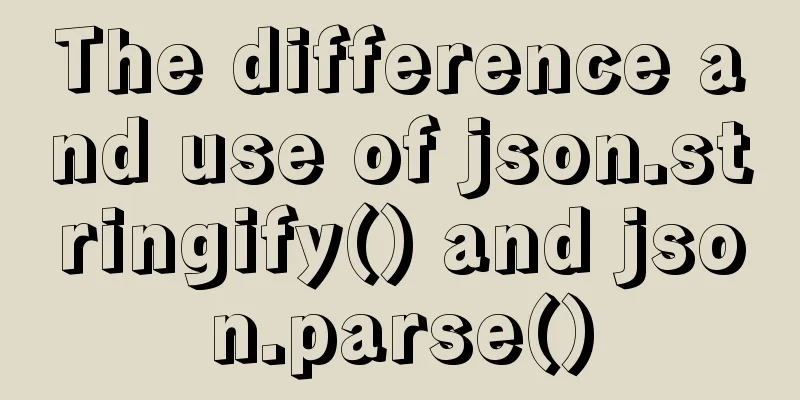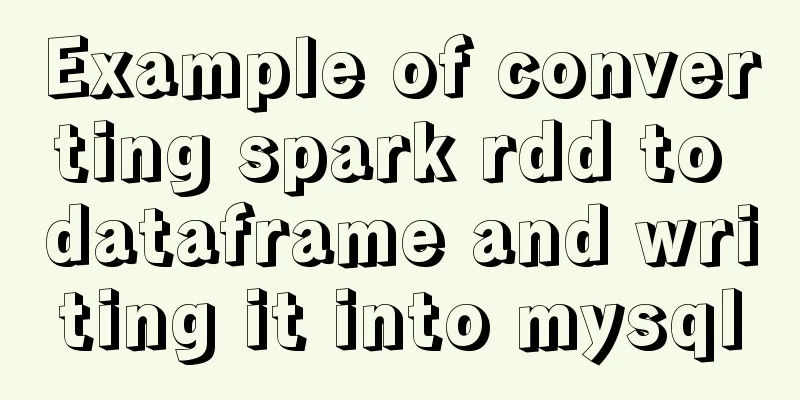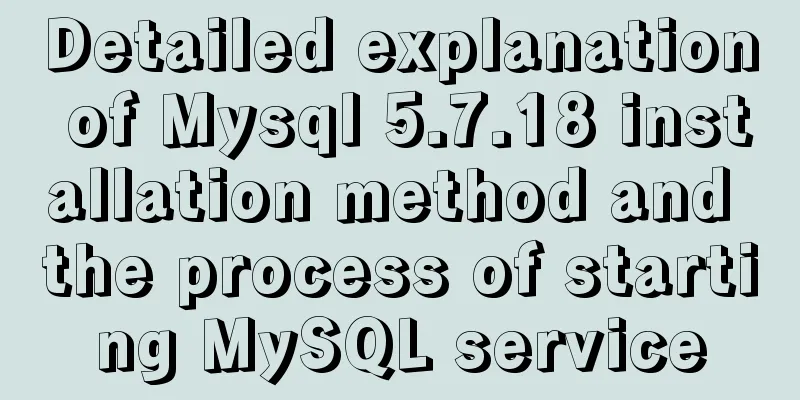The difference and use of json.stringify() and json.parse()

1. Differences between JSON.stringify() and JSON.parse() We have all used JSON.stringify() and JSON.parse(). You can tell from the names Easy-to-understand version:
To put it simply, their functions are relative. If I use JSON.stringify() to convert object a into string c, then I can use JSON.parse() to restore string c into object a. let arr = [1,2,3]; JSON.stringify(arr); //'[1,2,3]' typeof JSON.stringify(arr);//string let string = '[1,2,3]'; console.log(JSON.parse(string)) //[1,2,3] console.log(typeof JSON.parse(string))//object One thing to note when using JSON.parse() is that since this method converts a JSON string into an object, your string must conform to the JSON format, that is, both keys and values must be wrapped in double quotes: let a = '["1","2"]'; let b = "['1','2']"; console.log(JSON.parse(a)); // Array [1,2] console.log(JSON.parse(b)); // Error 2. Useful Uses of JSON.stringify() 1. Determine whether an array contains an object, or whether the objects are equal.
//Judge whether the array contains an object let data = [
{name:'Nuggets'},
{name:'css learning'},
{name:'js learning'},
],
val = {name:'Nuggets'};
JSON.stringify(data).indexOf(JSON.stringify(val)) !== -1; // true
//Judge whether two arrays/objects are equal let a = [1,2,3],
b = [1,2,3];
JSON.stringify(a) === JSON.stringify(b); //true 2. Allow localStorage/sessionStorage to store objects. By default, localStorage/sessionStorage can only store strings. In actual development, we often need to store objects. In this case, we can use json.stringify() to convert objects into strings when storing them. When retrieving the cache, we only need to use json.parse() to convert them back into objects.
//Storage function setLocalStorage(key,val){
window.localStorage.setItem(key,JSON.stringify(val));
};
//Get function getLocalStorage(key){
let val = JSON.parse(window.localStorage.getItem(key));
window.localStorage.removeItem(key)
return val;
};
//Test let data = [
{name:'Nuggets'},
{name:'css learning'},
{name:'js learning'},
];
setLocalStorage('STORAGEDATE',data);
let a = getLocalStorage('STORAGEDATE');
3. Implement deep copy of objects In actual development, if we are afraid of affecting the original data, we often make a deep copy of the data for arbitrary operations. In fact, using JSON.stringify() and JSON.parse() to achieve deep copy is a good choice.
//deep copy function deepClone(data) {
let _data = JSON.stringify(data),
dataClone = JSON.parse(_data);
return dataClone;
};
//Test let arr = [1,2,3],
_arr = deepClone(arr);
arr[0] = 2;
console.log(arr,_arr) //[2,2,3] [1,2,3]This concludes this article about the differences and uses of json.stringify() and json.parse(). For more information about json.stringify() and json.parse(), please search previous articles on 123WORDPRESS.COM or continue to browse the following related articles. I hope you will support 123WORDPRESS.COM in the future! You may also be interested in:
|
<<: Detailed process of decompressing and installing mysql5.7.17 zip
>>: MySQL replication table details and example code
Recommend
Solve the group by query problem after upgrading Mysql to 5.7
Find the problem After upgrading MySQL to MySQL 5...
Why can't my tomcat start?
Table of contents Phenomenon: Port usage: Spellin...
Docker private warehouse harbor construction process
1. Preparation 1.1 harbor download harbor downloa...
Centos7 startup process and Nginx startup configuration in Systemd
Centos7 startup process: 1.post(Power-On-Self-Tes...
Complete guide to using iframe without borders or borders (practical experience summary)
<iframe src=”you page's url” width=”100″ he...
Nginx implements dynamic and static separation example explanation
In order to speed up the parsing of the website, ...
Avoid abusing this to read data in data in Vue
Table of contents Preface 1. The process of using...
Reasons and methods for Waiting for table metadata lock in MySQL
When MySQL performs DDL operations such as alter ...
Vue project implements left swipe delete function (complete code)
Achieve results The code is as follows html <t...
Linux installation MongoDB startup and common problem solving
MongoDB installation process and problem records ...
MySQL view introduction and basic operation tutorial
Preface View is a very useful database object in ...
Install ethereum/Ethereum from scratch under CentOS7
Table of contents Preface Add sudo write permissi...
Detailed explanation of how a SQL statement is executed in MySQL
Overview I have recently started learning MySQL r...
Web componentd component internal event callback and pain point analysis
Table of contents Written in front What exactly i...
Detailed Analysis of Explain Execution Plan in MySQL
Preface How to write efficient SQL statements is ...









